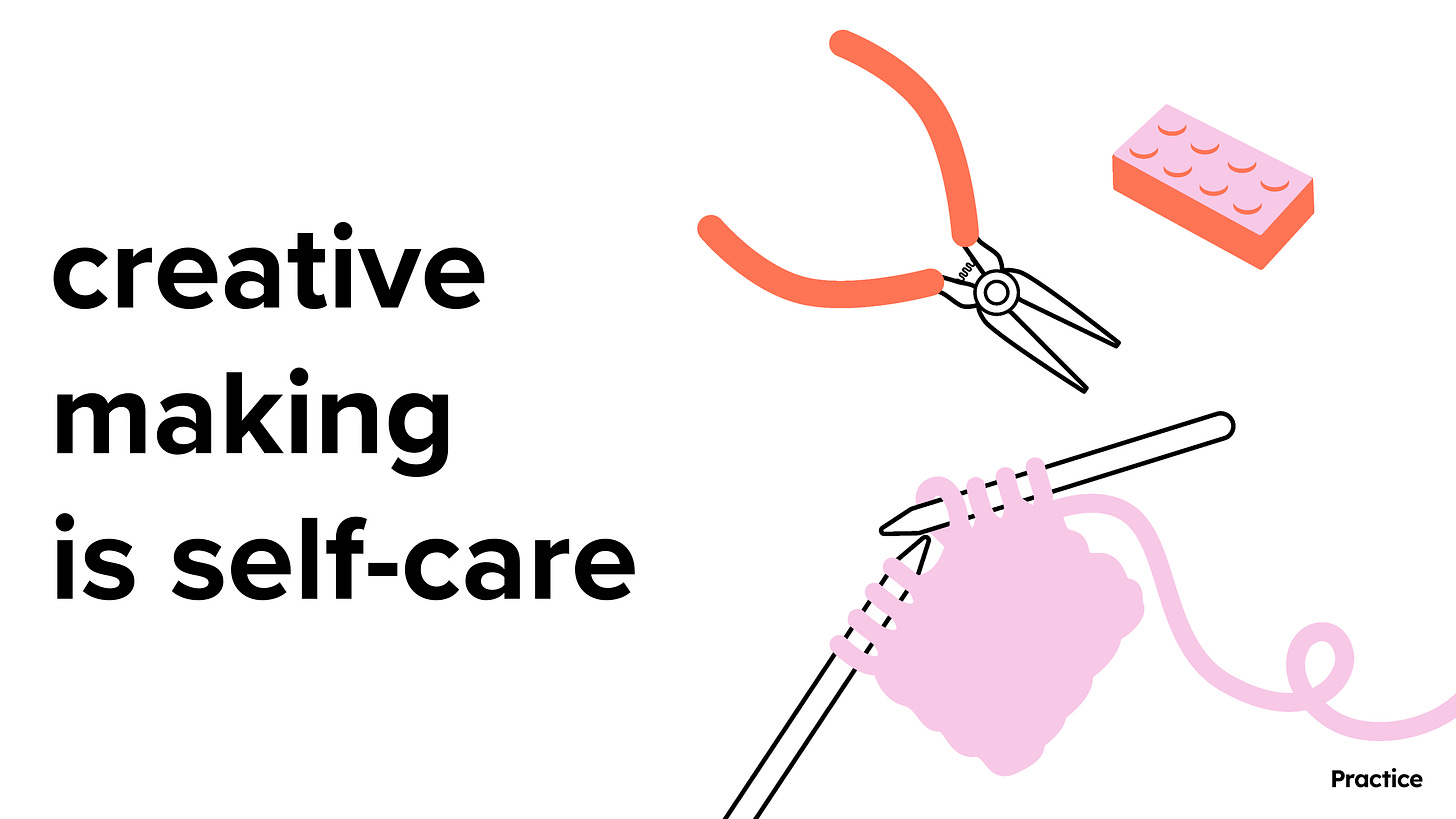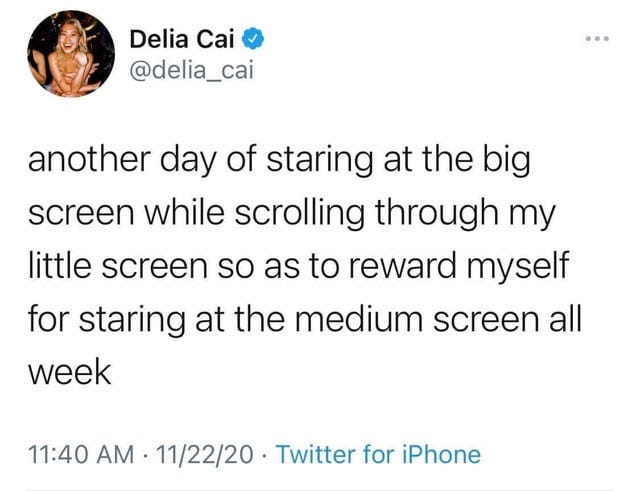I feel guilty when I skip going to the gym. My watch pings me when it’s time to stand. It’s common knowledge that eating well, staying hydrated, meditating, wearing sunscreen, and other healthy habits are key to living a healthy life.
My creative hobby is also a critical part of my well-being. Some people feel grouchy or can’t sleep well if they don’t exercise regularly. I get that way if I haven’t made something for a while.
That’s because creative making is actually self-care.
Self-care was recently defined in the International Journal of Nursing Sciences as:
“the ability to care for oneself through awareness, self-control, and self-reliance in order to achieve, maintain, or promote optimal health and well-being.”
Which definitely makes creative making self-care for me, but I believe it also has the potential to be self-care for anyone.
Creative making reduces stress and burnout, can lead to Flow state + joy, and has loads of other beneficial side effects. So why are creative hobbies still a bit stigmatized and not prescribed by everyone’s primary care doctors? Why isn’t creative making in the “obviously good for me” bucket in everyone’s “things that are good for me” spectrum?

I have a few theories. Here are my top three.
1. We’ve forgotten that creative hobbies can—and should be—fun and joyful
As I mentioned in my last post, many people (sadly) gave up on creative making as kids. Their inner voice has been telling them “I am bad at art and it is no longer fun” since they were nine. So they may not even consider creative hobbies as a potential source of joy.
But, let’s say they do. As adults in the United States, there are societal pressures to:
always be “productive” (in part due to internalized capitalism)
prioritize achievement and success over joy and well-being

This creates expectations that as an adult, creative activities should either be something you're already highly skilled at and/or something you do for money; otherwise, they can be seen as frivolous and not contributing to society's productivity.
To be clear: I celebrate the highly skilled and those who make money from their creative work! But, I think it’s a bummer that those who just want to explore or have fun with a hobby may feel hesitant due to societal expectations.
2. We’re accustomed to going from medium screen to little screen to big screen
I love a good screen. I stood in line on the first day of the first iPhone launch and was—and still am—in awe of the power of the tiny screen in my pocket. You are reading this on a screen right now! Streaming has provided us unprecedented access to media. Television has come a long way from laugh tracks and sitcom tropes. But along the way, we’re developing “tech neck” and are losing sleep from our screens.
It’s standard to watch Netflix or doomscroll (bonus points for doing both at once) in any precious downtime, and less standard to engage in a creative hobby. But the latter can generate joy, satisfaction, flow, etc. while screens usually do not.
3. It’s not straightforward for doctors to prescribe a craft
There are tens of thousands of scientific articles linking physical exercise to well-being but only a few hundred that link crafts to well-being. This factoid is courtesy of Dr. Anne Kirketerp, a Danish psychologist and knitter who is focused on “craft psychology” and the health benefits of creative making. I’ll share more about her theories in a future post (spoiler alert, she is amazing and I highly recommend watching this interview with her on this lovely, high-production value knitting podcast if you’d like to hear more. Okay, enough fan girling!).
Given the vast amount of scientific literature, it’s understandable that most doctors prescribe exercise (and, of course, prescription drugs) more frequently than crafts. Years of research link specific exercises and medications to distinct health benefits, while there is less of this for creative making. So, it’s easier to say, “walk 30 min. on the treadmill every day” or “take this pill twice a day” than “try knitting three times a week” to reduce anxiety (another hat tip to Dr. Kirketerp for this insight).
Make something and call me in the morning
My co-founder and I believe that creative making should be elevated to the level of exercise, eating well, and other self-care activities. We are eager for creative hobbies to be in the “obviously good for me” bucket in everyone’s “things that are good for me” spectrum. But we know this is easier said than done for the majority of the population.
We will soon (🤞) launch a product that’s focused on helping you build a creative making habit, and elevate that practice so it can become part of your self-care routine.
This is because I want more people to experience more joy, and sincerely believe that creative hobbies are one of the simplest ways to get there. Because you can literally make joy.





